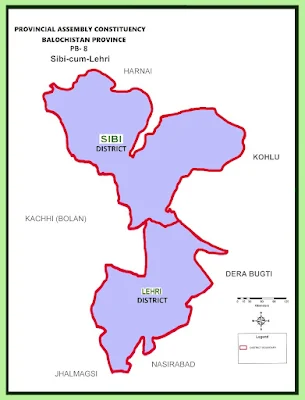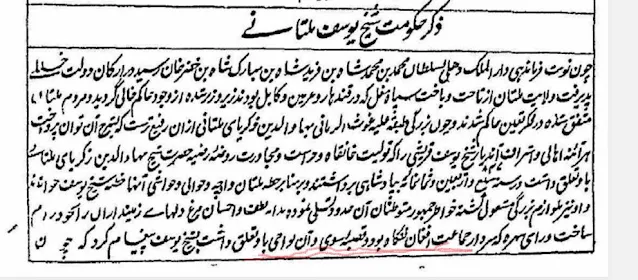From 1438 to 1526, Multan (much of Saraiki belt) functioned as completely independent kingdom. It was ruled by Langah tribe.
The two nearest contemporary sources which throws some light on the origin of the Langah sultans of Multan, are Tarikh-i-Farishta written by Muhammad Qasim Hindu Shah in 1612 AD, and Tarikh-i-Haqqi written by Abdul Haq Dehlawi in 1597 AD.
The author of the Tarikh-i-Farishta refers to the Langah as an Afghan (Pashtun) tribe and states that Rai Sehra (the founder of Langah dynasty) was chief of the Langah tribe of Afghans and he belonged the Siwi (Sibi) town and its environs.
The author of Tarikh-i-Haqqi call the founder of Langah dynasty, Budhan Khan Sindhi (i.e a Sindhi speaker). Shaikh Nurul Haq (son of afore-mentioned Shaikh Abdul Haq) in his book Zabdat al-Tawarikh writes that Budhan Khan Sindhi was from Lehri. Note that all other sources have Rai Sehra instead of Budhan Khan. Langahs were most likely Sindhi-speaking Jats. They could also be Sindhi-speaking Rajputs or any other Sindhi-speaking tribe.
 |
| Map of Sibi and Lehri |
In Wikipedia's article about Langah sultans, someone has written: "Abd al-Haqq, in the 16th century, referred to the Langah as a Baloch tribe". This is a lie. Original Persian text of Tarikh-i-Haqqi does not refer to the Langah as a Baloch tribe. It calls the founder of the Langah dynasty, a Sindhi.
The question arises as to why the author of Tarikh-i-Farishta has identified Langahs as Afghans (Pashtun). One explanation that comes to my mind is that the town of Siwi (Sibi) and its environs was inhabited by Panni Pashtuns in circa 1610 when Muhammad Qasim Farishta was writing his book. Perhaps it was an assumption on the part of Farishta that Rai Rehra was a Pashtun since Siwi was associated with Pashtuns in his times. Rai title was used by Hindu rulers or by those Muslims who converted from Islam so Rai Sehra definitely had Hindu background. There is no solid evidence that Pashtuns were Hindus before Islam or that their chiefs used the Rai title. Though it is open to speculation that some Pashtuns settled near Sindh had either converted to Hinduism or had imbibed some Hindu/Indian cultural influences. The Sibi-Kachhi region was considered part of 'Afghanistan' in 13th century (Reference Tarikh-nama Herat) and some Pashtun tribes were settled in this region. According to Tarikh-nama-Herat, one of the chieftains of Afghanistan was named 'Rana Kanjar'. Rana is a Hindu (particularly Rajput) title for rulers. It is in the realm of possibility that Langahs were either originally Pashtuns or became Pashtunized when the region was dominated by Pashtuns in 13th century and before. Even today, many 'Pashtun' clans of Sibi are Pashtuns only by name; they mostly speak Sindhi and Seraiki.
The Langah Khans of Shujatpur possess a late 18th century hukam-nama issued by Zaman Shah Durrani in which Langahs are referred to as Afghans.




No comments:
Post a Comment